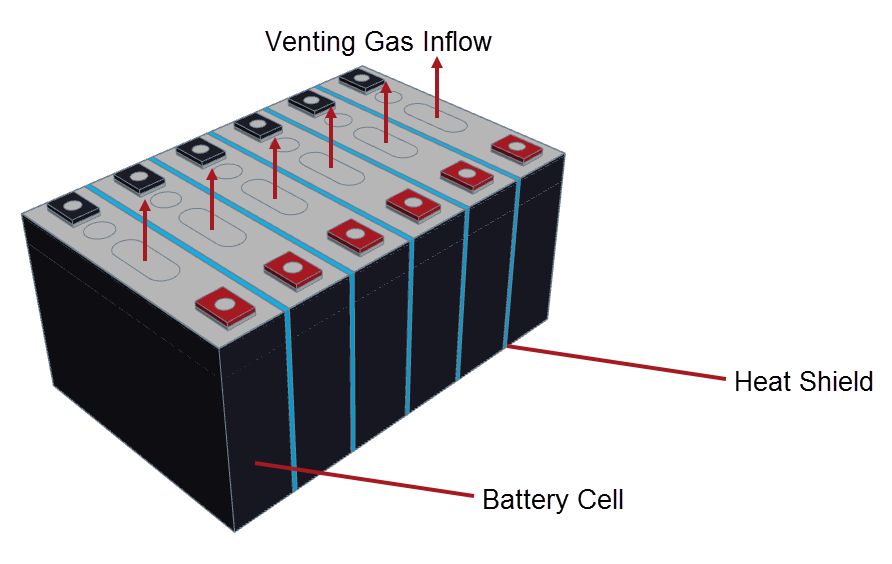Thermal Runaway: Battery Pack Heat Release and Venting
Thermal runaway in batteries occurs when a battery cell overheats due to thermal or mechanical failure, short-circuiting, or overcharging/over-discharging. At elevated temperatures, the battery cell materials can start to decompose in exothermic reactions, leading to self-heating behavior. When the self-heating of the battery cell exceeds the rate at which heat can be dissipated to the surroundings, the cell temperature rises exponentially, the battery structure can rupture, and all remaining thermal and electrochemical energy is released to the surroundings.
The decomposition exothermic reactions produce large quantities of heat and gas at a high rate, which causes the temperature and the pressure inside the battery cell to increase nearly instantaneously. Most batteries have a safety vent mechanism built in. When the internal pressure of the cell increases to the vent activation pressure, the safety vent opens and releases flammable and toxic gas—the venting gas. The venting gas can further induce thermal runaway propagation within a multi-cell battery module. The heat that is released during thermal runaway is divided into heat released by the solid parts of the cell and heat released by the hot venting gas.
Simcenter STAR-CCM+ provides the Thermal Runaway Heat Release model to predict the heat that is released by the solid parts of the battery cell during thermal runaway. This model requires experimental data input, namely the self-heating rate of the battery cell as a function of temperature of the battery cell. This data is typically obtained by performing an accelerating rate calorimeter (ARC) test. The ARC test also provides the mass flow rate of the venting gas as a function of temperature of the venting gas. In Simcenter STAR-CCM+, this data is imported in the form of tables.
The focus of this tutorial is on demonstrating how to set up a thermal runaway simulation to predict the heat release of the solid parts of the battery cell and the venting gas.

The first battery cell in the pack is overheated by applying a heat source of 500 W. When the temperature of the battery cell exceeds the temperature of 100 °C, thermal runaway is triggered and activates the Thermal Runaway Heat Release Model. In the course of the simulation, thermal runaway propagates to the other battery cells of the pack through convection and conduction.
The venting of the decomposition gases from the inside of the battery cell to the surroundings is modeled using the Thermal Runaway Battery Vent Model. When the temperature within the cell exceeds the trigger temperature of 130 °C, venting starts, using the values from an ARC test table.